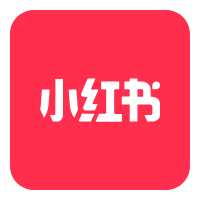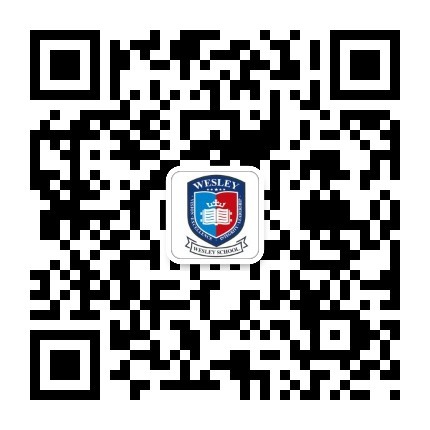2021年1月22日 唯诗礼幼儿园滨江园幼儿学习历程展以在线的形式顺利落下帷幕。因疫情原因,家长们未能入园参加活动,但是各个年龄段幼儿通过视频拍摄、作品展示、汇演等不同形式将第二探究主题单元中的学习历程呈现发送给爸爸妈妈们。
成长是一个漫长的过程,但有时仿佛就在一瞬间,我们要做的就是和孩子一起探索、冒险、体验、记录美好,一起遇见更好的自己!
On January 22, 2021, Wesley School Binjiang Campus’s Learning Journey was successfully held remotely. Due to the epidemic, parents were unable to attend the activities in person, but children of all ages sent the learning process of the second inquiry unit to their parents through different forms such as video shooting, work displays and performances.
Growing up is a long process, but sometimes it seems to be in a moment, what we need to do is to explore, go on an adventure, experience, record the good things with our children, and become better versions of themselves together!
PreK 我们是谁
Who we are
在“我们是谁”超学科探究主题学习历程展中,我们的托班小朋友们把自己对单元的理解和学到的知识,通过视频的方式分享给家人。
In the “Who are we” transdisciplinary exploration theme learning experience exhibition, although parents did not participate in the activity because of the epidemic, the children shared their understanding of the unit and the knowledge they learned with their families through videos.
我们一起分享:为什么家人朋友对我们都很重要?
Why do you think family and friends are important to us?

孩子们还将自己最喜欢的单元歌曲唱给家人听,多么认真的宝贝们!
The children sang their favourite unit songs to their families.
孩子们不单单展示了歌曲,还将自己在单元中学到的英文通过游戏的形式展示给家人。
The children not only performed their songs, and showed the English they learned in the unit to their families through games.
我们如何表达对家人的爱呢?孩子们精心地制作了礼物送给家人。
The children made gifts for their families.

K1 我们如何表达自己
How we express ourselves
K1A
活动一:六大探究步骤展示。幼儿通过自己的方式,能够自信、大方地向大家展示他们在本单元的学习过程。
Activity 1: Children show the steps of inquiry cycle through their own way, they can confidently and generously show their learning process in this .
活动二:通过探究学习,幼儿了解了不同的交流方式,知道聋哑人可以使用手语来表达自己,孩子们一起学习了手语《感恩的心》。
Activity 2: Through inquiry learning, children understand different ways of communication and know that deaf and dumb people can use sign language to express themselves. We have learned sign language “heart of gratitude”.

K1B
一、动物是如何交流的?
小动物们能不能说话呢?它们是怎样交流的呢?听K1B的小朋友们讲一讲吧!
小动物们也有自己独特的交流方式哦!来学学小蚂蚁碰碰触角、蜜蜂跳起圆圈舞、蝙蝠发出独特的声波来与同伴交换信息吧!
How do animals communicate?Can the little animals talk? How do they communicate? Let the kids from K1B talk about it. The little animals also have their own unique ways of communication. Learn how little ants touch antenna, bees dance in a circle and bats use echolocation to exchange information with their companions.

二、我的地图
小朋友们通过观察分享,发现身边有各种各样的标志,那就快快用这些标志来设计自己的地图吧!医院怎么走,披萨店在哪里,快来找找看吧!
My map :Through observation and sharing, children find that there are various signs around them, so they quickly use these signs to design their own map. How do I get to the hospital? Where is the pizzeria? Come look with us.
三、小小心理咨询师
每个人都有各种各样的情绪,认识情绪、了解情绪、正确处理情绪成了小朋友们的一个探究话题。现在请小朋友们来当一回“小小心理咨询师”,帮助大家处理情绪难题吧!
Psychologist activity:Everyone has a variety of emotions.Knowing,understanding and handling emotions correctly has become a topic for children. Now ask the children to be a “psychologist” to help you deal with emotional problems!
四、情绪转盘
你认识这些情绪吗?转动转盘说说看哦!
The mood wheel :It’s time for some English! Do you recognise the emotions? Can you spin the wheel and tell us their names?
五、小小设计师
认识了各种各样的标识之后,小朋友们发现绘本馆中还缺少一些标志,比如小朋友们会在沙发上跳来跳去很危险,这时就需要设计一个标志来提醒小朋友们。小朋友们根据自己的已有经验设计出了各种各样的标识,看看还不错吧!
Little designer :After getting acquainted with various signs, the children found that there are still some signs missing in the library. For example, it is dangerous for children to jump around on the sofa. At this time, you need to design a sign to remind the other children. The kids have designed a variety of signs based on their own experience. Look how good they are.
K1C
活动一:找找东西在哪里?
看!我们正在表演一个情景剧。“我的书包在哪里?”“你的书包在桌子下面!”
在这个活动中,孩子们充分的向大家展示了物品摆放的位置,语言流畅清晰,孩子们的表达能力在这个活动中也有很大的提高。
Activity 1: Our kids had to act a play according prepositions. Find out where the stuff is?
Look! We are acting out a sitcom. “Where’s my bag?” “Your bag is under the table!”
In this activity, the children fully showed the position of objects, and their language was fluent and clear. The expression ability of the children was also greatly improved in this activity.
活动二:情景音乐剧《Are you hungry》
在这首好听的歌曲中,孩子们认识了好多好多的水果,还学会了怎样去问”你饿了吗?”语言表达能有有很大的提升哟!
Activity 2: Scene Musical “Are You Hungry”.In this beautiful song, the children knows a lot of fruit, but also learned how to ask “are you hungry? Language expression can have a great improvement, showing how we can express ourselves.
活动三:我设计的标志
在第三个主题单元中,孩子们还学会了很多标志符号,每一个标志符号都能够告诉大家一些信息。孩子们为一张空空的地图设计标志,并来说一说自己设计的标志的含义与用途。
Activity 3: The logo I designed
In the third theme unit, the children also learned a lot of symbols, the meaning of each symbol . Kids design a logo for an empty map, and then explain the meaning and purpose of the logo.
活动四:我们的总结
孩子们大胆自信,用清晰有条理的语言向大家介绍着,在探究主题过程中,我们都做了哪些有趣的探究活动。
Activity 4: Our summary
The kids introduced each step of the whole exploration topic. The children were bold and confident, and introduced them in clear and organized language.

K1D
活动一:蒙住眼睛走迷宫。
孩子们很好奇盲人如何和我们沟通,他们看不见是如何走路的?带着这样的好奇心,孩子们进行了模拟体验。孩子们从蒙眼游戏中明白了我们的眼睛的重要性,以及同伴间需要彼此信任。
Activity 1: Walk the maze blindfolded. The children are curious about how blind people communicate with us. How can they walk if they can’t see? A maze was created out of chairs and sports equipment, and one child led another child through the maze with blindfolds on. The kids can’t see that they’re scared, so we warm up with emotional games. Professional children have no fear. The children learned the importance of our eyes from the blindfold play. Some children don’t want to be blindfolded because they don’t trust their leaders. The teacher should emphasize that the children should trust us to lead the way and come up with a good way to use music to guide the children around the maze.

活动二:制作标志。
旗帜是日常生活中的一项重要标志,孩子们通过认识不同的国家旗帜,了解背后所属的不同意义。在探究游戏过程中,也激发了孩子们想要制作自己班级旗帜的想法,于是通过讨论,寻找材料来共同创作。我们一起来看看吧!
Activity 2: Make a logo. Identify the flags of some countries and create their personal flags.(Show examples of flags, designs and colors.) Stencils help prevent children from scribbling. Guide the children to use different materials and colors, and explain why they put the symbols there and what they mean. After the children’s careful creation, their own flag is finished. We also put all the K1D children’s small flags together, formed the K1D class flag. Look, is the flag of our K1D class beautiful?
K1E
在“我们如何表达自己” 的主题学习历程中,我们一起来看看大家采取的各种行动吧!
活动一:我们探究了玩耍沙池滑梯时需要怎样的安全标志。幼儿们分组设计并展示了标志,他们用英语表达了这些标志的作用,摆放的位置,以及设置的原因。
活动二:幼儿们玩了小小情绪医生的角色扮演游戏,体会了如何更好的处理情绪,以及同伴间友好的相处。一个幼儿扮医生,另一个幼儿扮病人。回答医生的问题,然后医生可以开情绪处方 ,这是一种学习如何表达自己的有趣方式。
On our K1E learning journey we did videos backed with the theme, “How to express ourselves”. We showed videos of students taking action in relation to the theme. Students together with their teachers planted some safety signs on the sand slide. On the other Unit of Inquiry part, students showed the signs they had made by themselves ready to take action by planting them on the sand slide and they mentioned the roles of the signs in English. Students also did the little doctor and this part was in Chinese. One student was in a position of a doctor while the other was answering the doctor’s questions and after that the doctor could give a prescription – this was a way of learning how to express oneself. Students also described all the Unit of Inquiry phases of the Unit in English. Students also sang a Chinese song. On our circle time, students were playing a game about the weather and while playing the game they were identifying the weather vocabulary. Then finally we had a short video to showcase kids’ works.
我们身处什么时空
Where we are in place and time
中班的老师和小朋友,经过几个星期的准备和拍摄,制作了四个独特的视频,展示了以幼儿为主导的学习成果介绍。
在“在我们身处什么时空”单元探究活动中,孩子们沉浸在对不同住宅的探究世界中,对住宅历史演变、结构组成、建筑材料及性质、以及住宅与地方环境关系的进行探究。
While the current epidemic situation did not allow for us to bring you to Wesley for K2’s Learning Journey, K2 students and teachers worked hard to ensure that the Learning Journey was brought straight to your homes and to your screens! Several weeks of preparation and filming resulted in four unique videos displaying student-led introductions of the learning and the projects created during the last Unit of Inquiry: ‘Where we are in place and time’ (Houses).
This unit, students immersed themselves into the world of housing, and made important discoveries about the nature of human residences, including its evolution from prehistory to the present; its structures and composition; different construction materials and their properties; and the relationship between a given environment and its housing. Students showcased their knowledge in a variety of ways, using the art-work made throughout the semester as the foundation for their presentations. Thus, students provided insightsj’jia into their understanding of our three lines of inquiry.
在探究过程中,孩子们提出了各种问题。在通过讨论、实地参观、上网搜索等不同探究方式获得答案后,孩子们也将自己的收获与大家分享。
The composition and structure of houses
What are the different parts of a house? What are its founding elements? Can you name the different rooms inside? What is the function of each room? These are some of the questions students addressed when researching this line of inquiry, as well as the guiding element for them to refer to when designing and planning the houses which they built and then presented during our Learning Journey. Students demonstrated to be thinkers capable of applying the knowledge acquired into class to creatively building their own houses. Very impressive!
为什么沙漠中的房子和森林中的房子不同?为什么冰屋是用冰做的,但树屋不是? 为什么城市的建筑很高,而农村的建筑却不高?在探究过程中,孩子们充分展示了他们的积极探究、勤于思考的学习品质。
Mongolian yurts, Indian teepees, Eskimo igloos, wooden cabins… Students made interesting discoveries regarding houses in different regions of China and the world. Why are houses in the desert different from houses in the forest? Why are igloos made of ice but tree houses not? Why are buildings in the city tall but not in the countryside? Our students proved to be inquirers during our Tuning in phase, asking questions regarding the underlying the relationship between houses and their environments; findings which were narrated to the camera accompanied by outstanding replicas of world houses and ecosystems.
孩子们 通过分析古代和现代住房的结构、材料和不断变化的环境,进行了一次穿越人类住宅演变的时间旅行。
Once the understanding of the previous lines of inquiry was consolidated, our knowledgeable students were able to dive into the last line of inquiry: the evolution of houses over time. By analising the structure, materials and changing environments of ancient and modern housing, students accompanied spectators on a time-travel journey across the evolution of human residence, from caves, to mammoth huts, to high rise buildings. Needless to say they exhibited their potential as communicators by presenting these changes with utmost eloquence!
在探究过程中,孩子们通过阅读与房屋相关的书籍: “我的树屋”、“我的邻居”、“一个叫家的地方”和“波莉出去了”、“三只小猪”,以及表演绘本故事,这也丰富了孩子们的词汇以及语言结构。
While students acquired a wide array of vocabulary and structures immersively through the unit of inquiry, and demonstrated their increased fluency during their Learning Journey presentation; K2 children also incorporated a separate section for English learning in their videos. Each class presented three out of four of the Read Aloud storybooks covered during this unit, providing thus a platform for students to showcase their ability in the language. ‘My Tree House’, ‘My Neighborhood’, ‘A Place Called Home’ and ‘Polly Gets Out’ were the titles students narrated in the videos. Another recurrent story for this unit was ‘The Three Little Pigs’, which provided students with some valuable facts about different houses and their building materials.
K3 世界如何运作
How the world works
K3年级在这次学习历程的总结性评估活动中,特意准备了丰富的材料包让幼儿带回家,邀请家长一起参与评估幼儿的学习。孩子们在家通过游戏的方式展示学习历程,一起来看一看吧!
丰富的游戏 Rich and Interesting Game
老师为小朋友们准备了内容丰富的材料包,其中包含了数学游戏、记忆游戏、实验游戏以及体育游戏等十个游戏,在家完成六个游戏及以上的小朋友们将会获得唯诗礼幼儿园颁发的宇航员认证哦,下面来看看小朋友们都玩了哪些游戏吧!
The teacher has prepared a rich material package for the children, including math games, memory games, experimental games and sports games. Children who finish six games or more at home will get the astronaut certification issued by the Wesley Kindergarten. Let’s take a look at what games the children have played.
耐力游戏 Stamina Game
想要成为一名合格的宇航员,需要具备良好的身体素质,那么,你能够在一分钟里跳多少个跳绳呢?
If you want to be a qualified astronaut, you need to have good physical fitness, so how many skipping ropes can you jump in a minute?
成为一名宇航员,还需要有很棒的记忆力。因此小朋友们需要在一分钟内看看自己能完成多少个正确的图片匹配题!
To be an astronaut, you also need to have a good memory. So children need to see how many correct picture matching questions they can complete in one minute!
当你走进太空,突然发现太空舱出现故障,你会怎么办?别担心,来让小朋友教教大家吧!
What will you do when you go into space and suddenly find that there is something wrong with the capsule? Don’t worry, let the children teach you!
好吃的食物要怎么带上太空?宇航员在飞船中需要生活很久,那么食物应该如何储存呢?哦!原来完全真空的食物是可以带上太空,这样宇航员们就可以在外太空补充能量啦!
How to bring the food into the space?Astronauts need to live in the spaceship for a long time, so how to store the food? Oh! It turns out that food in a complete vacuum can be brought into space, so that astronauts can replenish energy in outer space!
通过容量游戏,小朋友们可以更加直观的感受多与少、大与小的概念,并且可以在脑海中更加深刻的形成:地球可以装下四个月球,而太阳则能够装下一百多万个地球!
Through the capacity game, children can more intuitively feel the concept of more and less, big and small, and can more profoundly form in their minds that the earth can hold four moons, while the sun can hold more than a million Earths!
小朋友们通过动手操作,可以更加深入的了解太阳系中八大行星的排列顺序,距离太阳的顺序分别是:水星-金星-地球-火星-木星-土星-天王星-海王星。
Children can learn more about the order of the eight planets in the solar system through hands-on operation. The order from the sun is Mercury-Venus-Earth-Mars-Jupiter-Saturn-Uranus-Neptune.
你知道太阳和我们的距离吗?看看小朋友是怎么测量的吧!虽然小朋友们无法直接测量,但是老师为小朋友们准备了测量工具,这样就小朋友不仅可以动手操作,还能估算出我们与太阳的距离呢!
Do you know the distance between the sun and us? Let’s see how the children measure it.Although the children can not measure directly, the teacher has prepared measuring tools for the children, so that the children can not only operate it, but also estimate the distance between us and the sun.
还有很多好玩的游戏,小朋友在家完成的都非常积极,很多小朋友都以视频或图片的方式记录了他们的游戏过程,家长也给了我们充分的反馈与评估,通过这个单元的探究活动,孩子们都获得了“小小宇航员”的认证哦!
There are a lot of fun games, children at home are very active, many children have recorded their game process by video or picture, and everyone has been certified as an astronaut!




